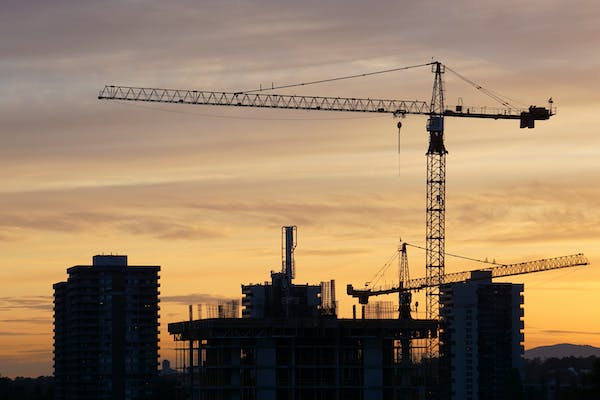
28 Jun BUILDING THE FUTURE: CONSTRUCTION FUTURIST EXPLAINS WHAT’S NEXT FOR BUILDERS
You don’t have to be a construction futurist or building keynote speaker to see how developers are already engineering a new future for the industry. We don’t blame them, given how much change has occurred in the field in such a short period of time – always a driver of ingenuity. However, at the same time, as construction futurists, we do think it’s important to take stock of and note some of the new trends and innovations helping push the industry forward.
By way of example, sustainability has emerged as a dominant theme in construction, driven by growing environmental concerns. New building methodologies are focusing on minimizing waste, using eco-friendly materials, and optimizing energy efficiency. Green construction and renewable energy solutions, such as solar panels and wind turbines, are also becoming mainstream. The industry is further increasingly adopting “Passive House” standards that significantly reduce the energy demand for heating and cooling in buildings.
Modular and prefabricated construction is on the rise too, per construction futurists, promising cost savings, speed, and efficiency. Prefab construction involves creating components or modules in a factory environment, which are then transported and assembled on-site. The practice reduces labor costs, shortens project timelines, and can improve the quality of construction.
The use of building information modeling (BIM) is also modernizing construction project management. It effectively allows architects, engineers, and construction professionals to create and use detailed 3D models of a building, improving coordination, reducing errors, and enhancing efficiency. With the advent of BIM 5D, project stakeholders can also manage aspects like cost and project timeline more effectively.
Oh, and in case you missed it, like construction futurists observe, digital twin technology is another transformative innovation bubbling up to the forefront of consciousness these days. It involves creating a virtual replica of a physical building or infrastructure, enabling real-time monitoring and decision-making. Such a cool new advancement can help predict potential issues, improve maintenance planning, and reduce costs.
The advent of construction robotics and automation is also noteworthy. For instance, robotic bricklayers, 3D concrete printers, and autonomous construction vehicles are already making their mark, contributing to improved accuracy, speed, and safety.
Of course, wearable technology is also contributing to the increased safety of construction workers. Smart helmets equipped with IoT technology can monitor vital signs, detect falls, and track the location of workers, thereby enhancing onsite safety measures.
Furthermore, drones, or unmanned aerial vehicles (UAVs), are playing an increasingly crucial role in construction. They offer a safer and more efficient way to survey sites, create digital maps, monitor progress, and even assist in dangerous tasks like inspections of high structures.
Concurrently, the use of augmented reality (AR) and virtual reality (VR) is growing in the field, according to construction futurists and building keynote speakers. Each can help stakeholders visualize the finished project in a detailed and immersive manner before construction begins. On the other hand, AR can assist in onsite construction by overlaying 3D models onto the physical world, guiding workers and reducing errors.



